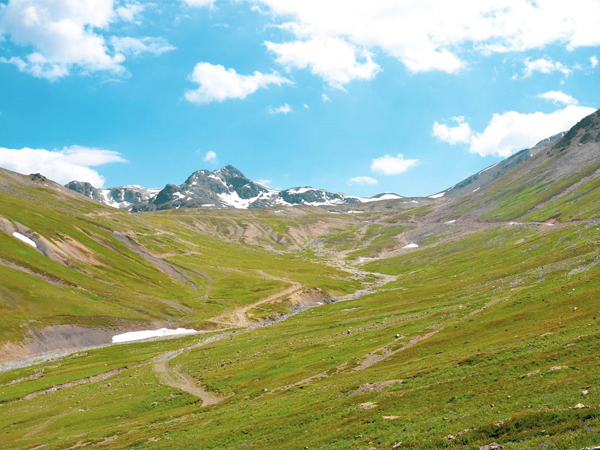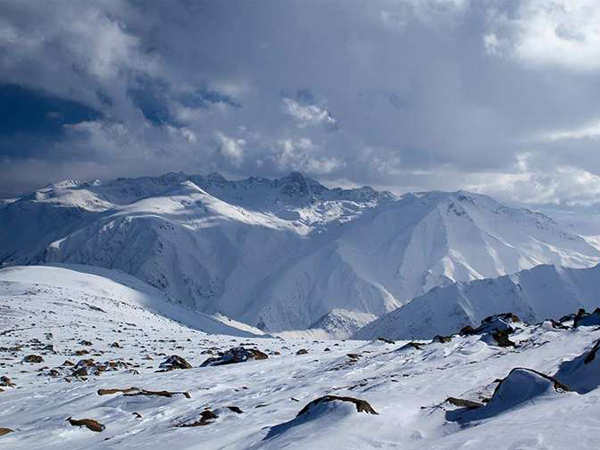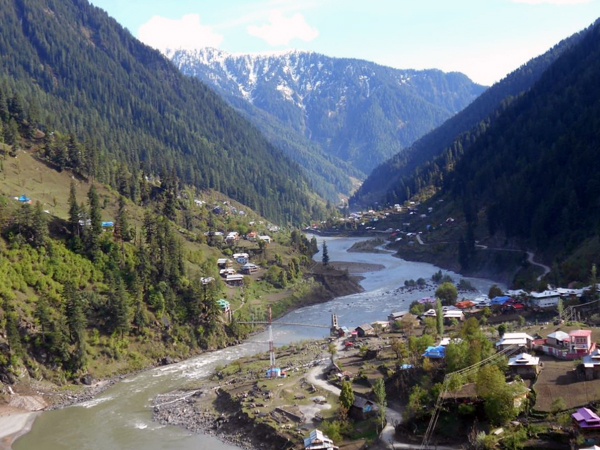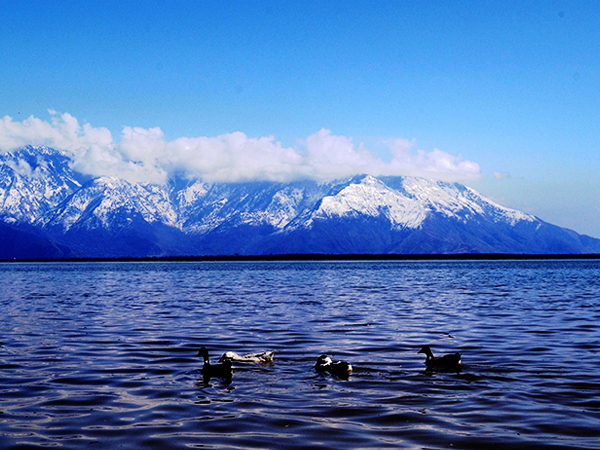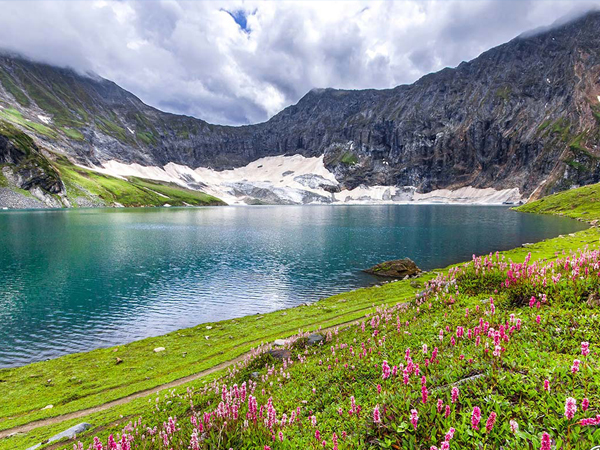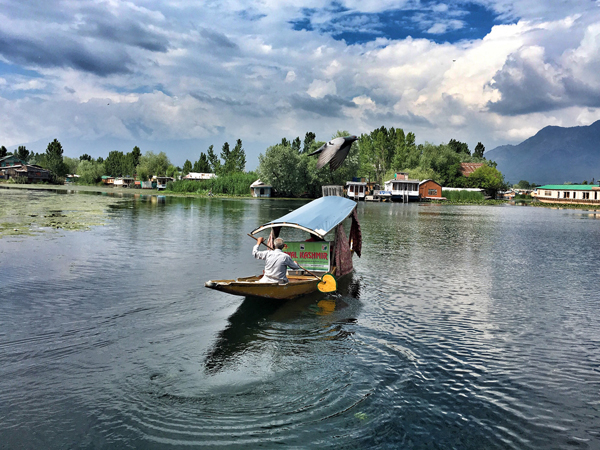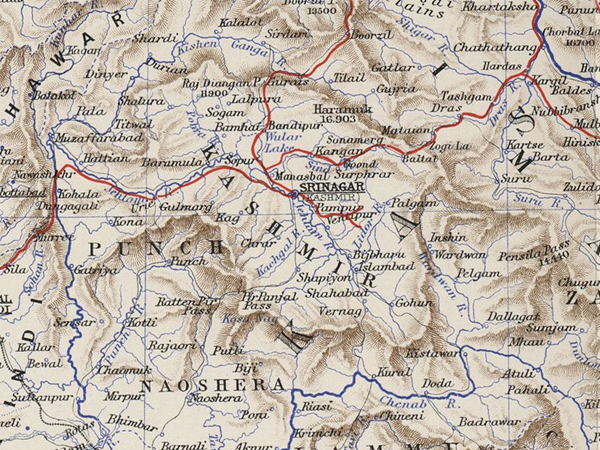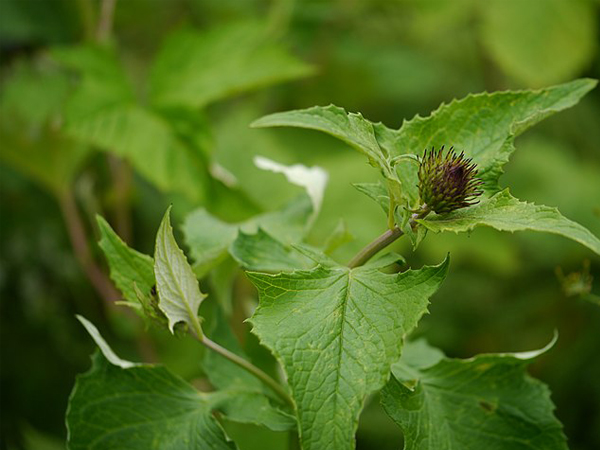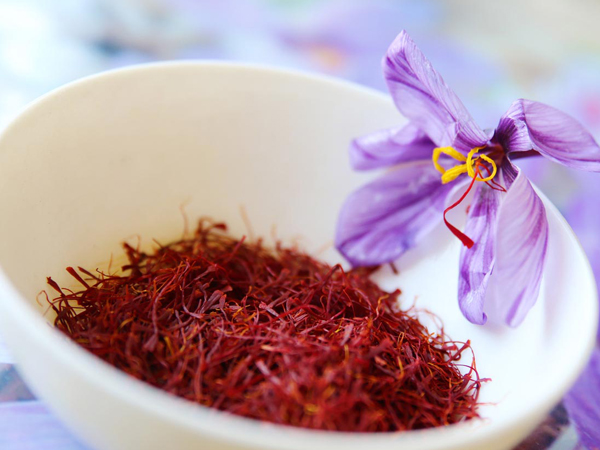Geographical Background

Geographical Background of AJ&K
The land of Jammu, Kashmir, Ladakh, Baltistan and Gilgit collectively make the official territory of the Dogra’s State of Jammu and Kashmir. This area is picturesquely set in the lap of great Himalayas, Karakoram and Hindukush chains of mountains with such an unrivalled combination of alluvial soil, Lofty and glacial mountains, crystal clear streams, torrents, broad lakes, shady chinar groves and pine forests, which makes it the most beautiful spots in the world. The geological studies in the areas let us know that during prehistoric times Kashmir valley was a lake called Satisar came into its present form Geologists have also come to believe that Kashmir valley was earlier affected by earthquakes. Once there was such a devastating earthquake that it broke open the mountain wall at Baramulla and the water of the Satisar lake flowed out leaving behind lacustrine mud on the margins of the mountains known as Karewas. The karewas protrude towards the east and look like tongue-shaped with deep ravines. Popular traditions tell that Samdimat Negar, capital of the kingdom of the Sundar sena, was submerged as a result of an earthquake, and the water filled the area formed the Waler Lake. Found in several mountain spurs at Zewan, threw, Khonomuh around Srinagar.
Geographical Background of AJ&K

Mountains of Kashmir
Mountains have a special geographical importance to the state of Jammu and Kashmir.
The valley is enclosed by heigh mountain-chains on all sides, expect for certain
passes a narrow gorge at Baramulla. There are Siwalik Hills towards the south and
very lofty mountains too in the state which have caused havoc in Kashmir in the past.
Where the mountain cease to be steep, fan like projections with flat arid tops bare of
trees run out towards the valley. These plateaus are known as karewas, which sometimes
stand isolated in the middle of the valley. Karakoram and Kunlun Ranges lie to the
north and north-east of the state and separate it from Russian Turkistan a Tibet.
In the north-west, Hindukush range continue towards karakoram Range, where k2 Peak,
the second highest peack of the world, is situated. Zanskar Range is about 600 meters
above sea level and seprates Indus valley from the valley of kshmir. pat is famous
pass in this range. Besides, this Nun Range lies between Ladakh and kashmir border.
To its south-east is situated Kulu and to its north west is situated kargil tehsil of
Ladakh.Nanga parbat Range spreads in Gilgit. its height is 8107.68 meters above sea
level and is utterly devoid of vegetation. Famous Banihal pass lies in the shape of
tunnel on its peak. It remains covered with snow during winter making it impassable.
On the other hand on the end of this range lie Bramula pass and Hajipir pass.
The Rivers
Jammu and Kashmir state is well known for its charming scenery, enhanced by its
beautiful springs, lakes rivers and their tributaries. The famous rivers of Azad
Jammu and Kashmir include. The Jhelum is the main waterway of the valley of Kashmir.
Vetasta, modern Jhelum, is the back bone of Kashmir. A few miles lower down, river
Kunar, which drains the Hazara land also fall in Vetasta at right side but aiding
no considerable increase in its volume. The ancient name of the river Neelum valley was Kishanganga,
which is derived from the Krishna, Sindhu, Kishanganga and the ‘River of Gold’.
The river curves along more than 200 kilometers of the valley, sprawling along the
line of Control and finally, at Muzaffarabad joins the river Jhelum River. This River
rises from the south-westerly course to meet with Jhelum at Mirpur. It is considerably
shorter and smaller than the Kunhar River or the Kishanganga, but due to being located
in mountain it exceeds in Scenic beauty. Deep green pools, dramatic cliffs, side
streams cascading over waterfalls and exotic wildlife all characterize this
beautiful river. The river poonch which drains the poonch area of the foothills
of jammu and kashmir is a tributary of river jehlum.
The Lakes
Ancient chronicles refer to several stream, springs and lakes in Kashmir.
Legends added that originally land of Kashmir was a lake known as Satisaras or
the lake of Goddess Durga. The lake situated in the plains or lower ground are
called Dal such a Waler and Manasbal lakes in India held Kashmir. The Waler Lake
is the largest fresh water lake. The Dal Lake is another beautiful lake near Srinagar.
The Anchar lake is a swampy area. In Neelum valley there are three lakes Narda and Sharda, Sarawati and Vagedevi.
Kalhanna Rajataragini mentions Saraswathi Lake as a sacred abode of gadded Sharda.
The other famous lakes which situated on the mountains of Neelum valley are Hariparbat lake, ,
Rati Gali Lake, Jal khat lake. Neil fairy lake in Abba spur Poonch and several other smaller lakes.
The Dal Lake is another beautiful lake near Srinagar. The Sind Nullah enters this lake Mughal gardens
are situated around it. The Anchor Lake is a swampy area. In Neelum valley there are three lakes Narda
and Sharda, Sarawati and Vagedevi. Kalhanna Rajataragini mentions Saraswathi Lake as a sacred abode of
gadded Sharda. The other famous lakes which situated on the mountains of Neelum valley are Hariparbat lake, Aansoo lake,
Rati Gali Lake, Jal khat lake. Neil fairy lake in Abba spur Poonch and several other smaller lakes.
Ancient Routes
The valley of Kashmir has enclosed on all sides by mountains which
form its natural ramparts. Only three roads had been opened through
them which again secured by gates. In the east, a rout leads to Tou-fan
on Tibet, in the north, a road reaches Po-liu or Baltistan and the road
from the western gate reaches K’ien-to-lo Gandhara. Another route, which
Ou-kong describes, always remained closed, and opened only when an imperial
army honored that, leads over the Pir Pantsal range on the South. The route
via Pir Panjal pass, from Rajouri reached Thanna to Baramgala Poshiana,
Aliabad sarai, Haripur, Sahajimarg, Khanpur, Rambagh and Srinagar.
This route was difficult and remained open for seven months. Another
route, which deserves mention here, is the Route from Jhelum, chechan,
Mirpur, Chaumukh, Bihari, Sansar, Kotli, Saria and Poonch.
The Tosmaidan route passed from Mandi,
Loharin to Tosmaidan pass, Firozpur, Gulmarg, Tang Marg to Srinagar.
Floura & Fauna
Ancient chronicles refer to several stream, springs and lakes in Kashmir.
Legends added that originally land of Kashmir was a lake known as Satisaras or
the lake of Goddess Durga. The lake situated in the plains or lower ground are
called Dal such a Waler and Manasbal lakes in India held Kashmir. The Waler Lake
is the largest fresh water lake. The Dal Lake is another beautiful lake near Srinagar.
The Anchar lake is a swampy area. In Neelum valley there are three lakes Narda and Sharda, Sarawati and Vagedevi.
Kalhanna Rajataragini mentions Saraswathi Lake as a sacred abode of gadded Sharda.
The other famous lakes which situated on the mountains of Neelum valley are Hariparbat lake, ,
Rati Gali Lake, Jal khat lake. Neil fairy lake in Abba spur Poonch and several other smaller lakes.
The Dal Lake is another beautiful lake near Srinagar. The Sind Nullah enters this lake Mughal gardens
are situated around it. The Anchor Lake is a swampy area. In Neelum valley there are three lakes Narda
and Sharda, Sarawati and Vagedevi. Kalhanna Rajataragini mentions Saraswathi Lake as a sacred abode of
gadded Sharda. The other famous lakes which situated on the mountains of Neelum valley are Hariparbat lake, Aansoo lake,
Rati Gali Lake, Jal khat lake. Neil fairy lake in Abba spur Poonch and several other smaller lakes.


